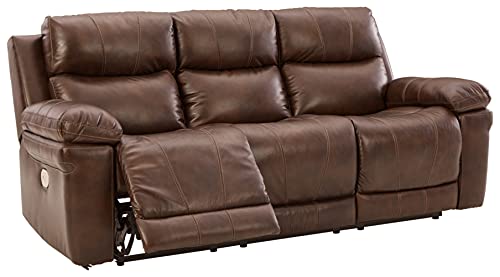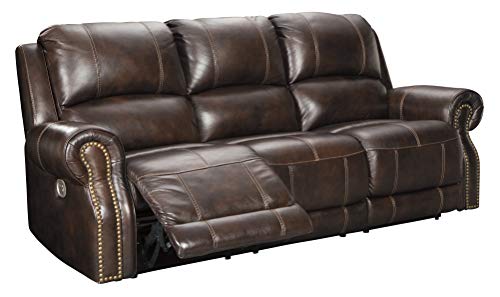Are You Responsible For An Genuine Leather Sofa Budget? 12 Best Ways T…
페이지 정보

본문
 How to Spot a Genuine Leather Sofa
How to Spot a Genuine Leather SofaThis sofa makes a fantastic addition to any room. Its leather upholstery is incredibly soft. Customers adore its simple styling and top-quality genuine leather upholstery.
 However, distinguishing real leather from fake leather corner lounge (idea.informer.com write an article) can be a challenge to the untrained eye. Here are six ways to help you distinguish between the two: 1. Edges that are rough.
However, distinguishing real leather from fake leather corner lounge (idea.informer.com write an article) can be a challenge to the untrained eye. Here are six ways to help you distinguish between the two: 1. Edges that are rough.1. Check the label
Real leather is hard to duplicate. It's unique in feel and look. It is also durable, easy to clean and doesn't soak up excess body oils. This makes it a great choice for allergy sufferers. Not all leather sofas are created equal. In fact, some retailers have even been known to pass off PVC as genuine leather.
To help you avoid getting scammed, it's crucial to understand the different types of leather. This includes determining full grain and top-grain leather, and also evaluating the quality material of the upholstery. Do not hesitate to ask your favorite retailers for this information.
To determine if you've got a genuine leather sofa, you must first examine the label. The label should clearly state the kind of leather used to cover the sofa along with any other materials such a fabric or cotton. The most reliable suppliers should also have clear policies regarding return or exchange if you are not happy with the purchase.
If the sofa doesn't have a label, you can still confirm its authenticity by checking the fabric backing of the sofa or by opening the cushion casing. You can also look at the texture of the leather to determine if there are any imperfections or bumps. These are signs that the leather is fake or has been bonded.
Another way to check the integrity of a sofa is by the surface of the sofa with your fingertips. Genuine leather has a smooth and soft texture, while faux or bonded leather will be more coarse and more akin to suede. Furthermore you should be able to discern the difference between wrinkles and bumps of genuine leather as well as the patterns printed on faux leather.
While a genuine leather sofa will cost more than a faux counterpart It's a wise investment as it will last longer and can often become family heirlooms over the years. You can limit the damage that's caused by sun or ozone, heat, humidity by putting your leather sofa in a cool, dark room far from fireplaces, heaters and air cooling units. Creams for protection on leather can be used to keep your leather sofa strong and soft.
2. Look to the leather sofa company back
If the label doesn't reveal what kind of leather a sofa is, you need to get up close and intimate with it. The smell, the feel and the back are all clear indicators.
If you touch the surface of genuine leather, it will not feel smooth and silky. This is due to the fact that animal hides have diversely shaped pores that allow them to breathe. However, a leather product that feels completely smooth suggests that it may be fake leather.
Check for bumps or uneven surfaces. The preparation of genuine leather includes buffing, which takes away some of the rough outer skin. If the leather covering your sofa is top grain leather, there'll still be some bumps.
You can also test leather by pressing your finger into it and then running it across it. If the leather is real, it will stretch and wrinkle just like human skin. This allows the vintage leather sofa to breathe and keeps it from becoming dry or cracking in time.
Faux leather is printed and therefore has a uniform pattern, however genuine leather may have natural imperfections that enhance its beauty and durability. This includes creases and scratches. Genuine leather is soft and a little stiff when it's new. However, it shouldn't dry out or crack if you condition it regularly using a cream for protection against leather.
Some furniture makers mix real leather with synthetic leather in order to save money. The contact areas such as seats and armrests, as well as backs, are made of genuine leather, while the non-contact parts, such as outside and base arms are upholstered using a less expensive polyurethane- or leather-like-synthetic fabric. Even if the sofa is advertised as genuine leather, examine the back to determine if the couch is genuine leather.
Labels and pricing can help identify a genuine leather sofa, but it is important to look it over. Examine the back of the sofa for traces of polyurethane which is a sign that it's not genuine leather.
3. Check out the seat
The seat of a genuine leather sofa is a further indication of its quality. While most faux leather couches make use of a mixture of fabrics for the upholstery Genuine leather has a unique texture that is smooth to the touch and is not completely uniform in color and shade. Be aware of bumps on the surface and a rich natural, fresh scent. These features distinguish genuine leather from imitations or cheap leather.
If the leather is stitched in a continuous, large piece, that's another warning sign. This is common in faux leather, but if it's on genuine top-grain leather and you are looking for a sofa, avoid the sofa.
Pricing and labels can give you a hint however the only way to be sure is to sit down to the furniture. The genuine leather isn't perfect, and it should feel uneven to the touch. It also has rough edges and fat wrinkles beneath the surface. The suppleness of genuine leather is different from synthetic materials, leather Corner lounge and the temperature of the furniture will tell whether it's constructed using genuine materials.
A leather sofa is an interior design mainstay for good reason: It's stylish, durable and long-lasting. It is also easy to clean and resistant to spills of liquid. This makes it a perfect choice for families who have pets or children. The best thing about genuine leather, leather Corner Lounge however, is that it's a classic style that will never ever go out of fashion and is still available at a range of prices.
For a classic leather couch that will last for a long time, consider the Pottery Barn Turner. The two-seater might be expensive but it's constructed of top-quality leather that can last for a lifetime. It's a great choice for those with limited space, since it comes in with three sizes and will fit in the majority of rooms.
If you're looking for something little more modern, consider this All Modern Geo Genuine Leather Sofa. This couch is a mid-century modern leather sofa set-inspired style with an elegant, angular frame and asymmetrical cushions that combine form and function. The frame is made from plywood, composite and plastic, the sofa has genuine leather in the seating area, which is a improvement over Ikea's faux-leather couch, which was awarded the leather sofa company CHOICE's "Shonky" award in 2015.
4. Check out the smell
Real leather has an unmistakable scent. It's a natural, organic scent that can't be replicated. If the sofa that you're considering buying has a strong, artificial scent it's not authentic. Most often, this is due to the chemicals used to process the leather. They remain in the furniture after it has been manufactured and even after you have it at home.
A great way to determine the quality of a leather sofa is to gently run your fingers over the surface. Genuine leather will feel rough and include lumps and bumps, just as human skin. If it feels soft and cold, it's most likely fake or the leather is bonded.
You can also open one of the cushions to examine the back. Faux and bonded leather will have some form of polyurethane backing that supports the fabric, whereas true leather has an untreated back that resembles in appearance to coarse suede. If the couch is backed by a woven fabric it is not real leather.
Peter says that the best method to determine whether a sofa is real is to lightly run your fingernails across the surface. The grit on the leather will make your fingernails duller and the leather should stretch and wrinkle slightly. It will also feel soft and warm to the touch.
Turning the sofa on its back and inspecting the upholstery will also tell you if it is genuine. Genuine leather is a continuous piece of leather, not a plastic-coated faux or the bonded leather.
Consider how much you will use your leather sofa and how long it is expected to last when choosing the quality. The more you use a couch in a given time, the more it will need to be maintained. Peter suggests regular and gentle cleaning using a special leather conditioner to keep the suppleness of the leather and keep it from becoming dry and hard.
- 이전글6Things You should Learn about बाइनरी विकल्प 25.01.31
- 다음글How you can Make Extra 7 Months Ago Today By Doing Less 25.01.31
댓글목록
등록된 댓글이 없습니다.